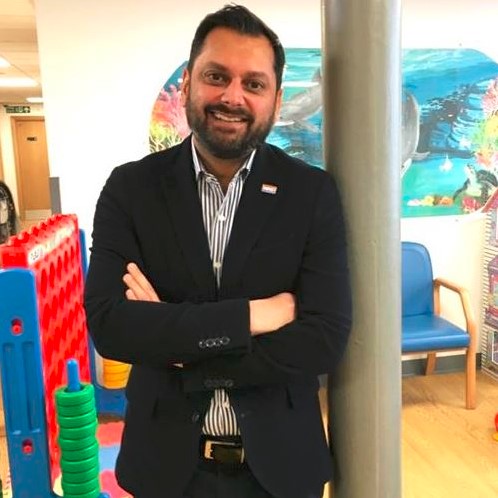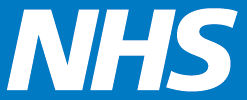Hello, my name is Dr Sal Uka, and I’m proud to be the Medical Lead for the West Yorkshire Association of Acute Trusts (WYAAT). In this blog I am going to take the opportunity to reflect my thoughts on the WYAAT journey so far, and where we should aim to be in the future.
WYAAT is the acute sector collaborative, bringing together six trusts across West Yorkshire and Harrogate. The purpose of WYAAT is to create a region-wide, efficient, and sustainable acute healthcare system that embeds best practice and promotes innovation. We want every hospital to consistently deliver the highest quality of care and the best possible outcomes for all our patients, whilst being a great place to work.
WYAAT defines itself, not by being an organisation, but by what the six member trusts can achieve by working together. From its inception it has been a collaboration of the willing and participation in WYAAT programmes is voluntary.
Since the introduction of statutory Integrated Care Boards in July 2022, all NHS trusts providing acute hospital services have been mandated to be part of a provider collaborative. This formalisation of acute provider collaboratives is part of a fundamental shift in the way the health and care systems are organised, placing a greater emphasis on collaboration and partnership working.
Whilst this may seem a change for many parts of the country, for us, this is our business as usual. WYAAT trusts have been working together in partnership for six years, and as a ‘legacy collaborative’, we find ourselves leading on the front foot, helping to shape the future of acute collaborative working on a national scale.
WYAAT – the beginnings
In 2016, six trusts came together through WYAAT because they believed that the health and care challenges and opportunities facing our area could not be solved by each hospital working alone. There was no mandate, but there was a collective will.
The WYAAT memorandum of understanding describes the governance and decision-making structures, but also describes the principles of collaboration which include acting in a timely manner, through collaboration and cooperation, with openness and transparency, and ultimately to address the vision.
WYAAT originally had twelve priorities covering corporate support, clinical support, and clinical services. We were the delivery mechanism for what was known as the West Yorkshire and Harrogate Health and Care Partnership’s ‘Hospitals Working Together’ programme.
WYAAT – the here and now
Six years on, WYAAT is a well-established, recognised, and respected acute provider collaborative which is significantly impacting on the delivery (and recovery) of hospital services in West Yorkshire and Harrogate.
Collaboration is now part of the everyday business of our hospital trusts and played a key part of our trusts’ Covid response. Supported by a Programme Management Office, and self-funded by the trusts, WYAAT now runs eleven collaborative programmes whilst responding collectively to wider clinical, operational, and strategic issues across the health and care sectors.
The Yorkshire Imaging Collaborative, Pathology Programme, and the West Yorkshire Vascular Service have all delivered significant transformation across West Yorkshire. Our programmes remain clinically and operationally led with a growing expertise in delivering change across a system.
The utopia of system leadership is often preached but the reality of tangible change requires time and patience. The permissive nature of how we all work is sometimes a barrier to moving from words to action, but if carefully nurtured, collaboration really does deliver. That said, not every problem needs a system solution and collaboration does not mean every trust, every time. Hence, collaboration where it makes sense to do so.
Two-years into COVID, collaboration feels even more intuitive and purposeful. WYAAT is responsible for the coordination and delivery of all elements of Elective Recovery, including supporting patients to have treatment in different trusts. This scale of collaboration is only possible when colleagues have trust, ownership, and are empowered to make changes beyond their immediate place of work. This legacy creates the opportunity to build on the WYAAT Way into the future as the leading acute provider collaborative in the country.
WYAAT – the future
For WYAAT the future is about evolution, not revolution. The time feels right to renew WYAAT’s sense of purpose, whilst reinforcing the WYAAT vision. This will always be about creating the opportunities for colleagues to work differently for the benefits of all our patients and the wider West Yorkshire population.
Since starting in role, oversight of the WYAAT Clinical Strategy remains a key piece of my portfolio. There have been a few draft iterations over the past few years, initially based on an in-depth analysis of clinical services by my predecessor, Dr Robin Jeffrey along with former WYAAT Director, Matt Graham, and Programme Manager, Gary Cooper. Since then, certain fragile services have emerged and in the wake of COVID-19 have been prioritised as programmes. Through this, WYAAT has broadened its remit and partnership approach, working ‘across and through’. As WYAAT evolves, this matrix approach working across and through partner organisations will be fundamental to ensuring a more seamless approach to improvement along patient pathways and not just what happens within the four walls of a hospital.
This should mean that WYAAT continues to support trusts to deliver services in true partnership with place-based health, care, and voluntary sector organisations. There will be opportunities to share good practice through loose networks, whilst maintaining the need to tailor services for local communities. At the other end of the spectrum, networked services should support colleagues to deliver services as close to where people live, albeit through shared governance.
However, there needs to be a practical application of the concept of collaboration where it makes sense to do so. There is an opportunity to apply a framework that allows ongoing surveillance of those services where elements of planning, delivery and oversight could be at WYAAT level. Such a framework would shift towards a more proactive approach to supporting service sustainability with tiered interventions depending on scale. This more fluid model allows for collective foresight but equally is reliant on fundamental behaviors of trust, transparency and the same sense of belonging mentioned above. These fundamental behaviours that are the bedrock of collaboration throughout WYAAT.
I believe that WYAAT’s greatest achievements are yet to come, but to achieve these we need to learn and share from our experiences and celebrate successes. This evolutionary tale must maintain focus on our purpose and vision with a pragmatic application of collaboration. Moving from service sustainability towards a more proactive catalyst for demonstrable improvement, and not just change, is equally key. Places will always seem the intuitive direction for collaboration but to achieve population health ambitions we need to commit to collaboration across and through systems.
It is a genuine privilege as clinical leader to enable improvements that positively impact on peoples lived in experiences and (health) outcomes. I am incredibly grateful to colleagues within WYAAT and our wider West Yorkshire Health and Care Partnership for their generous support, kindness and most importantly, commitment to working together for the benefit of every single person living in West Yorkshire. Collaboration should know no boundaries and I am sure that we are all on a journey of evolution, not revolution.









